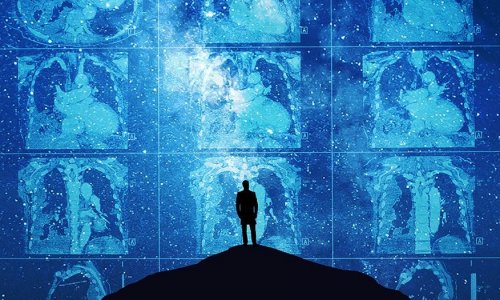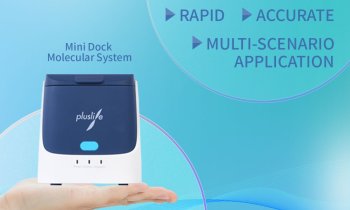Partnerships to personalise medicine
Peter Loescher has worked at the cutting edge of the pharmaceutical industry for 17 years. In the latter part of this period, for example, he headed Hoechst's division in Japan, where he was also spokesperson for the European pharmaceutical industry, negotiating with the Japanese government during its healthcare reform in 2002.

He then joined Amersham Plc ‘There I met Bill Castell, who was then the CEO of Amersham. We strongly believed in the vision of personalised healthcare and the importance of diagnostics to make that a reality, but soon realised that to achieve it you need a global footprint and the skill that a medium-sized company, such as Amersham, didn’t have. Subsequently, there was a meeting of minds - between Jeff Immelt, Chairman of the Board & Chief Executive Officer at GE and Bill Castell, which led to the business combination and the acquisition of Amersham by GE in 2004. I’m responsible for the totality of GE Healthcare Bio-Sciences in this business.
Daniela Zimmermann: Your company also has a co-operation with Roche regarding personalised healthcare?
PL: Yes, and we’re extremely excited about this, because obviously both companies are leaders in personalised healthcare. Roche is very focused on the neurological franchise, as well as oncology, and we collaborate on Alzheimer’s disease. Fundamentally, the mechanism of this disease is not understood. Presently the assumption is that the build-up of amyloid plaques in the brain basically is a key contributor to the development of Alzheimer’s. Roche is working on therapy areas, with compounds that basically try to arrest the disease, or diminish the plaque burden and therefore arrest the disease. To really image this you need a biomarker, and we have diagnostic molecular imaging agents that really image the build-up, so using these we can identify the disease in patients before there are symptoms and therefore help Roche to really stratify the patient population in the right way. At the same time we can also image the amyloyd plaque burden in the brain - if it is stalled or is decreasing - so we can show the effectiveness of the therapy. So hopefully, through our research collaboration, the result will be that both products will be licensed by the authorities. Then the scenario would be a tandem development of what we have already and you would first get a diagnosis then the therapy, and see, in real time or in a very short period of time, whether the therapy really works or does not work for you. This is very much the paradigm of personalised healthcare. So it’s a key co-operation for us. ‘Molecular imaging is the future. It will allow us to really understand the disease burden in different areas. So Roche is one example, and we have another collaboration with Lilly, also for Alzheimer’s, and in the future these could become role models for working together in the pharmaceuticals industry.
DZ: What’s the difference between your co-operation with Roche and Lilly?
PL: It’s basically for the same disease - Alzheimer’s. Our imaging agents can be used across the pharmaceuticals industry, so it’s not specific for only one therapy and we are therefore working with a number of pharmaceutical firms who have compounds that try to arrest the build-up of the amyloid plaque. Lilly is working in the same field, so we have a similar collaboration with them. We can access Lilly’s compound library to help us to identify, hopefully, a number of leads - which agents or compounds could potentially work as future diagnostics in this disease.
DZ: Which is best, CT or MR, for molecular imaging?
PL: For us it doesn’t matter. Finally the medical professionals will decide. It’s not a question of either/or. I think both will be hugely important, and you will have PET, for example - PET- CT is an important area. We also work on another compound, C13, in the research field, which, if it works, will allow metabolic imaging on an MR machine. So the answer is, we don’t mind. We are advancing the technology in all areas, so physicians can make their own decisions.
DZ: In European Hospital we have written about the Eisenherz oncology project, in which Siemens, Philips and Schering are collaborators. This also demonstrates how competitors can come together to advance medical diagnostics. Given your collaborations with Roche and Lilly, it’s a very exciting time in cross-activities between the imaging, pharmaceutical and contrast agents industries, which has never happened before.
PL: This is the new world of personalised healthcare, and it has needed a very solid understanding of the molecular imaging basis. So, historically speaking, imaging agents used to be structural and now we are moving the whole paradigm to the molecular imaging world, through which we can really create this linkage between therapy and diagnostics. We are very excited about that.
DZ: However, it’s not a business yet.
PL: Right. We are at the threshold, an early research and development stage, but over the next 5-10 years this could be a very important way of improving patient care globally. I have just returned from Japan where the overall healthcare costs are 42 trillion Yen (around 295 billion Euros) and government officials made a point of saying: ‘If we do not change healthcare delivery as it is done today, by 2020 the 42 trillion will become approximately 90 trillion. So, who would or could pay for this? You would have to improve prevention and diagnose diseases earlier - one of the ways in which we could contribute.’
DZ: Who is your main competitor in molecular imaging?
PL: We entered the field and focused on this area a number of years ago, so we are the market leader, with a significant lead over our competitors in this field - and these are very good, respected competitors. Schering, for example, is trying to advance in this area. So, yes, the industry is trying to replicate what we are doing, but we definitely have the lead and the advantage of being the only company that can link diagnostic pharmaceuticals together, really the only one to know how the technological roadmap looks for different modalities over coming years, and to be able to ask: What are the imaging needs and unmet medical needs to direct the equipment business to really focus on the imaging agents? We have structured our research activities, focusing basically on oncology, neurology and cardiology, and have the broadest based molecular imaging portfolio in the industry and can link them together.
Kristin Silady, Communications Manager, US at GE: We understand the pharmaceutical challenges. We have been through the radiotherapy processes and clinical trials, so in partnering with pharmaceutical companies we have a very different expertise. Contrast agents are a pharmaceutical business, and we have the actual imaging agents and the machines within one company. This is very different from someone who is on the other side of the wall. There is confidentiality and things that cannot be disclosed. That is another consistent advantage.
PL: I agree, but would not be surprised if other companies try to follow our lead. When you engage in a strategic partnership, particularly in molecular imaging, you have an element of how you have to adapt the equipment side of the business. What are the software capabilities that you need around the imaging agents? For example: We are the only company that already has a molecular imaging agent (called DatSCAN) on the market in Europe. Of course we have developed a software programme around it, to help physicians to clearly optimise and simplify the reading of images, then to have a database available at the end of the day, which hopefully will link all the cases to a certain database and say, ok, an image that looks like this, against the database, is diagnosed as an early onset. This hopefully allows physicians to make more informed decisions, because finally it’s the clinician’s decision, although you help him to guide and create more certainty around that decision-making. And this includes equipment, software and imaging agents. It’s a clear advantage if you have all three of these together.
01.03.2006
- Alzheimer's (206)
- cooperation (356)
- economy (1046)
- medication (528)
- molecular (205)
- personalised medicine (261)








